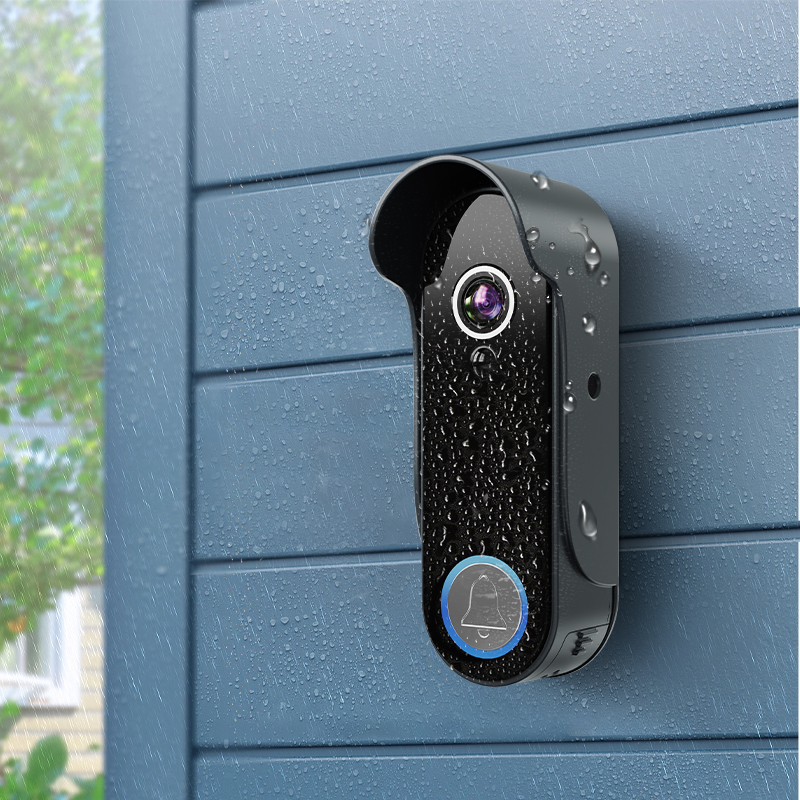Smart Wireless Video Doorbell: A Deep Dive into Video Codec Technology
Time:2024-09-23 14:11:25 ?? Views:29

Amidst the wave of smart home devices, the smart wireless video doorbell has emerged as a vital component of modern home security, offering features such as HD video transmission, real-time monitoring, and remote communication. Serving as a critical bridge between the interior and exterior of the home, these doorbells leverage built-in HD cameras and advanced video codec technology to achieve efficient compression and low-latency transmission of video data, delivering unparalleled convenience and security to users. This article delves into the video codec technology employed in smart wireless video doorbells, comprehensively examining its technical principles, encoding and decoding processes, as well as its application and significance within the doorbell system.
I. Fundamentals of Video Codec Technology
Video codec technology stands as a cornerstone in digital video processing. It compresses and decompresses video data, reducing its size during storage and transmission while maintaining the integrity of video quality. In smart wireless video doorbells, this technology is paramount as it enables efficient video transmission and real-time communication by minimizing bandwidth requirements and storage space while preserving video clarity.
II. In-depth Analysis of the Encoding Process
Data Capture and Preprocessing
The built-in HD camera of the smart wireless video doorbell captures video signals from outside the door and converts them into digital video data. To optimize the subsequent encoding process, these digital video data undergo preprocessing operations such as noise reduction, color correction, and frame rate adjustment, enhancing video quality and reducing redundant information.
Redundancy Removal and Data Compression
Video data inherently contains significant redundancy, both temporal (similarity between consecutive frames) and spatial (similarity among adjacent pixels within an image). Encoding algorithms identify and eliminate these redundancies to lower transmission and storage costs. Techniques like intra-frame prediction, inter-frame prediction, transform coding (e.g., DCT transform), and quantization drastically reduce data redundancy while maintaining video quality.
III. Decoding Process Breakdown
The decoding process is the inverse of encoding, aiming to restore compressed video data into playable video images. When the indoor unit or the user's mobile app (e.g., Tuya Smart App) receives compressed video data, the decoder processes it based on the video stream's encoding format and parameters.
Entropy Decoding and Inverse Quantization
The decoder first performs entropy decoding on the received compressed video data to recover transform coefficients and quantization parameters. It then applies inverse quantization to restore the pre-transform video data.
Inverse Transformation and Frame Reconstruction
Following inverse quantization, the decoder applies inverse transformation (e.g., IDCT) to recover the original video pixel values. Subsequently, it reconstructs frames by combining prediction residuals with predicted images based on intra-frame and inter-frame prediction information.
Post-processing and Optimization
Lastly, the decoder performs post-processing operations on the reconstructed video frames, such as deblocking, color correction, and sharpening, to enhance video quality and viewing experience. Additionally, it employs techniques like error concealment and frame interpolation to optimize playback in case of packet loss or delay during network transmission.
IV. The Application Value of Video Codec Technology in Smart Wireless Video Doorbells
HD Video Transmission
With advanced video codec technology, smart wireless video doorbells enable real-time transmission of HD video data. Even under limited bandwidth conditions, they maintain video clarity and smoothness, providing users with a more realistic visual experience.
Low-Latency Communication
For seamless video calling experiences, smart wireless video doorbells necessitate low-latency video data transmission. Video codec technology achieves this by rapidly processing video data, optimizing transmission protocols, and leveraging hardware acceleration, significantly reducing transmission delays and ensuring smooth, lag-free communication between users and visitors.
Convenience of TF Card Storage
Smart wireless video doorbells offer TF card storage functionality, enabling users to insert appropriate-capacity TF cards for local video data storage. This feature provides a flexible data backup solution and ensures video data security and accessibility even during network instability or remote service interruptions. The convenience of TF card storage further enhances the practicality and reliability of smart wireless video doorbells.
In conclusion, video codec technology in smart wireless video doorbells is pivotal for achieving HD video transmission, low-latency communication, and bandwidth and storage savings. By deeply analyzing the encoding and decoding processes and their application value within the doorbell system, we can appreciate the significant progress and broad application prospects of this technology in smart wireless video doorbells. As technology continues to evolve and innovate, smart wireless video doorbells are poised to play an increasingly crucial role in the smart home market, enhancing convenience and security in people's lives.
Chinese Website——http://516ip.cn/